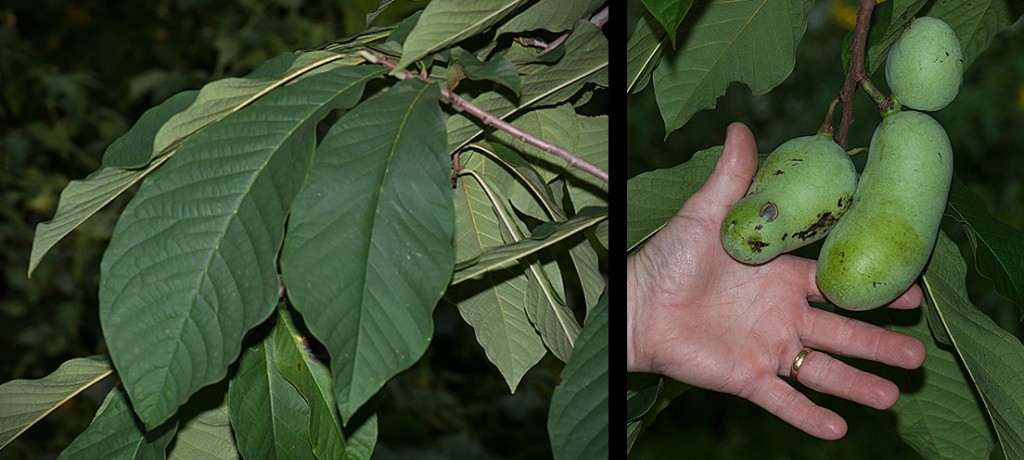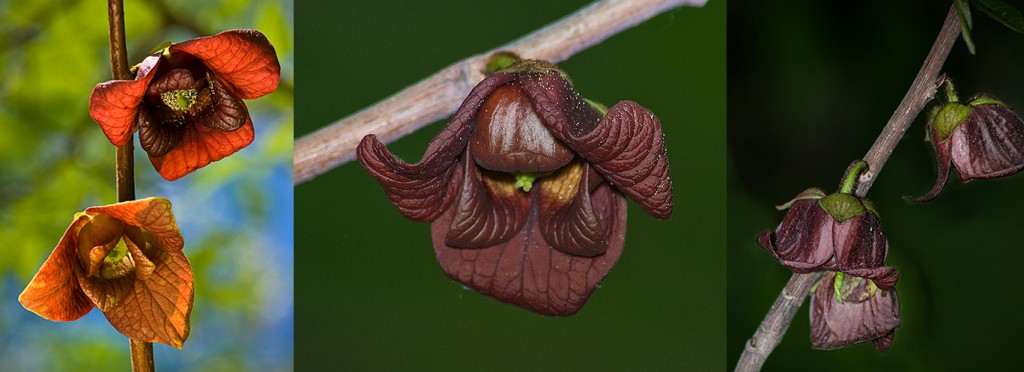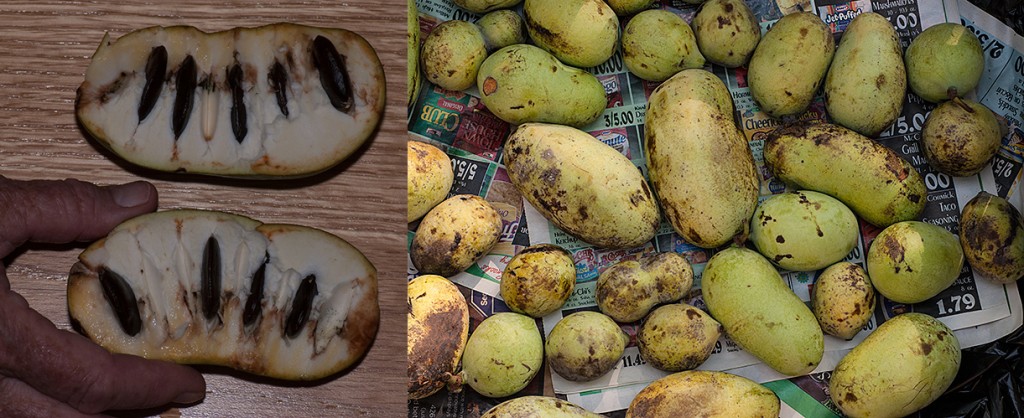Pawpaw or Wild-banana or American Custard-apple (Asimina triloba) occurs in the southern third of Michigan’s Lower Peninsula. We are at the northern edge of its range. It is Michigan’s only member of the largely tropical Custard-apple Family (Annonaceae).
Pawpaw is a shrub or small tree that can bear fruit on plants as little as a meter (3 feet) tall. In Michigan, they normally grow along rivers in floodplains but also occur in rich deciduous forests and swamps.
The dark maroon flowers, with three long outer petals and three much shorter inner petals, appear before the leaves expand, and look quite tropical to me. Their foul smell attracts flies that pollinate them.
The leaves are alternate, broadest near the tip and 15 to 30 cm (6 to 12 inches) long.
Pawpaw has the largest fruit of any native Michigan plant, up to 13 cm (5 inches) long and 2cm (1 inch) thick. It is a large berry containing four to twelve flattened black seeds about the size of a lima bean. The flesh is edible, my favorite wild fruit to eat, although I have friends who hate the taste. The fruiting season is short. Raccoons love them, and have climbed into baskets of Pawpaws as I was carrying them. The picking technique I use is stand to one side of a fruit cluster (so the falling fruit does not hit me), gently shake a small tree and catch the falling fruit. I pick them when they are slightly green but they ripen in a few days.
The Pawpaw Foundation is developing commercial cultivars. Local farmers’ markets sometimes have them for sale. My preference is to eat them raw or cooked into a custard or Pawpaw bread. See the Foundation’s website for recipes.
Now is the time to pick Pawpaws. Get out and explore a river floodplain and look for Pawpaws with their ripe fruit. Only one of these large berries is needed to provide a sample of their unique taste.
Copyright 2013 by Donald Drife
Webpage Michigan Nature Guy
Follow MichiganNatureGuy on Facebook





Good web site -not only should people go out, and look for the fruit people should be aware that certain trees found in the wild may be useful for breeding, or who knows Cloned (air layered cuttings) patent the cultivar, and sold for profit.
IF you look at some of the Cultivars they where discovered In The wild.
I am trying my best to restore Native pawpaw trees (out side Chicago IL)
unfortunately after going all the way to Ohio pawpaw fest In Athens for a large amount of seeds , someone threw them (out of the fridge) in the garbage when I wasn’t home.
I had one about the size of a Hass Avocado (a little bigger) with only 3 seeds.
Know what Forest preserves I can find them at around MI.
There are pawpaws in the Sterling Heights city park. It is not hard to find the plant along the river valleys in southwest Michigan, particularly near Pawpaw.
The Michigan Nature Guy
August 2018. I’ve found a very large grove of Paw Paw trees, but there are no fruit on any of the trees. Is this common, or do the animals remove the fruit before they’re ripe?
Raccoons love them. My local Pawpaw stand did not get enough rain this year to set fruit. We are on the north end of their range and they don’t set fruit every year. You could go back mid-September and look for fruit. Green fruit, among the leaves, high in a tree is difficult to spot.
Good Evening MichiganNatureGuy,
Would you be aware of any specific areas close to grand rapids that you would recommend looking for pawpaw groves? This will be my first year looking for them. I have been anticipating the season since my SO told me about the fruit
Thanks
Sorry, I don’t know any locations near Grand Rapids for pawpaw.
Any pawpaw in Washtenaw County or anywhere close?
They are mapped from Washtenaw County in Michigan Flora. I don’t know of any specific locations in the county. I presume it would be in the floodplain along the Huron River.